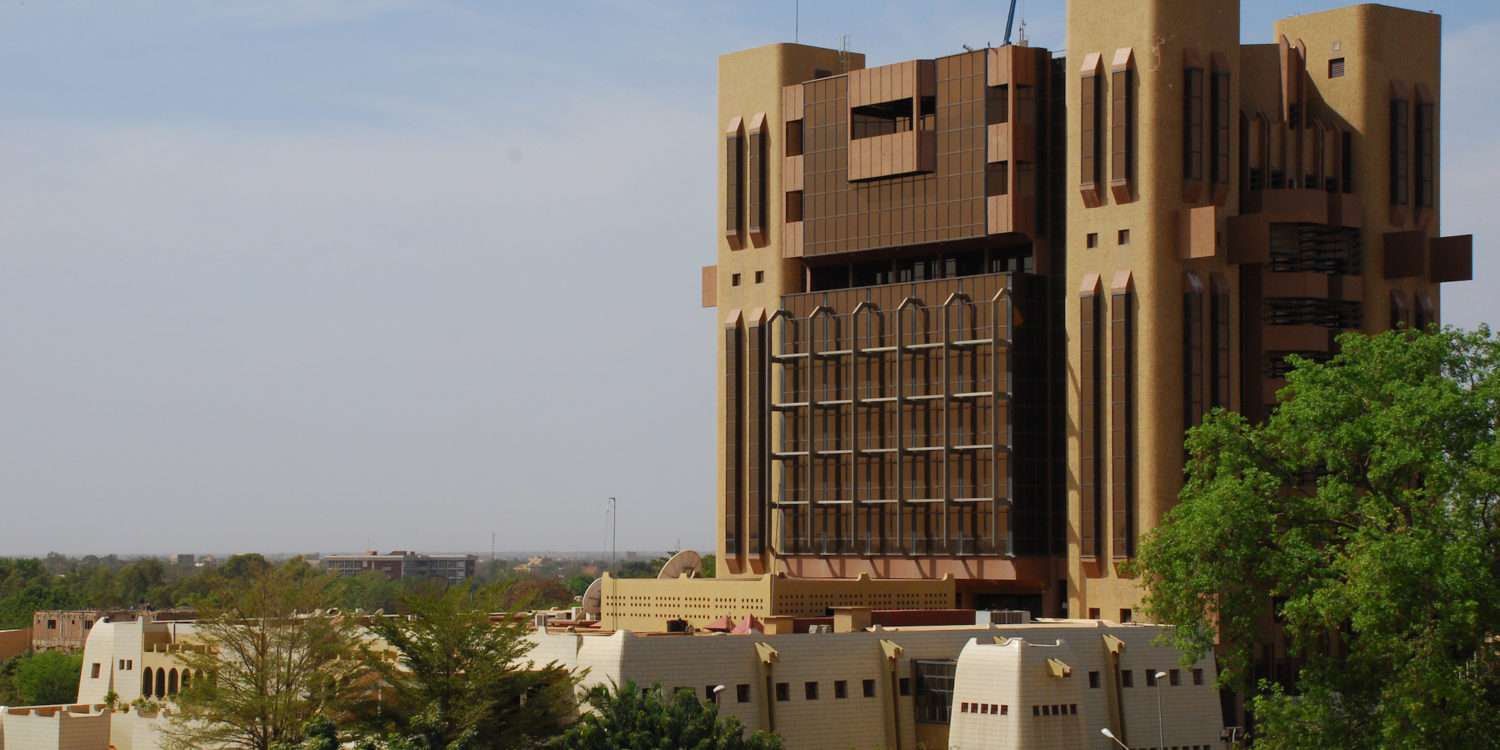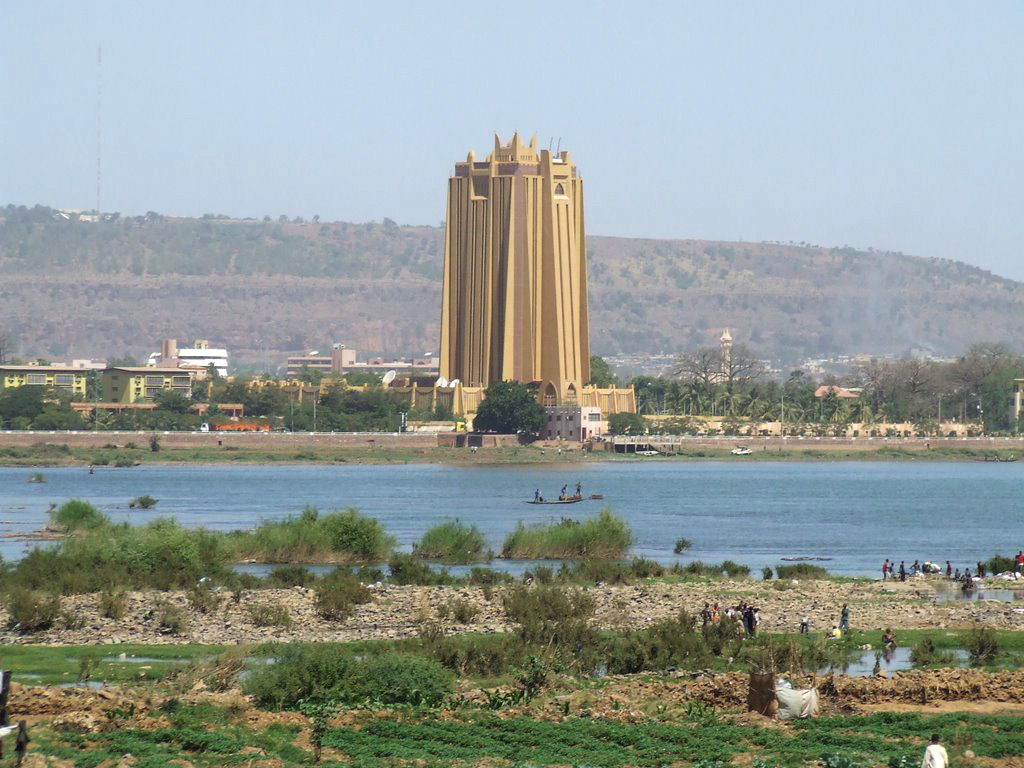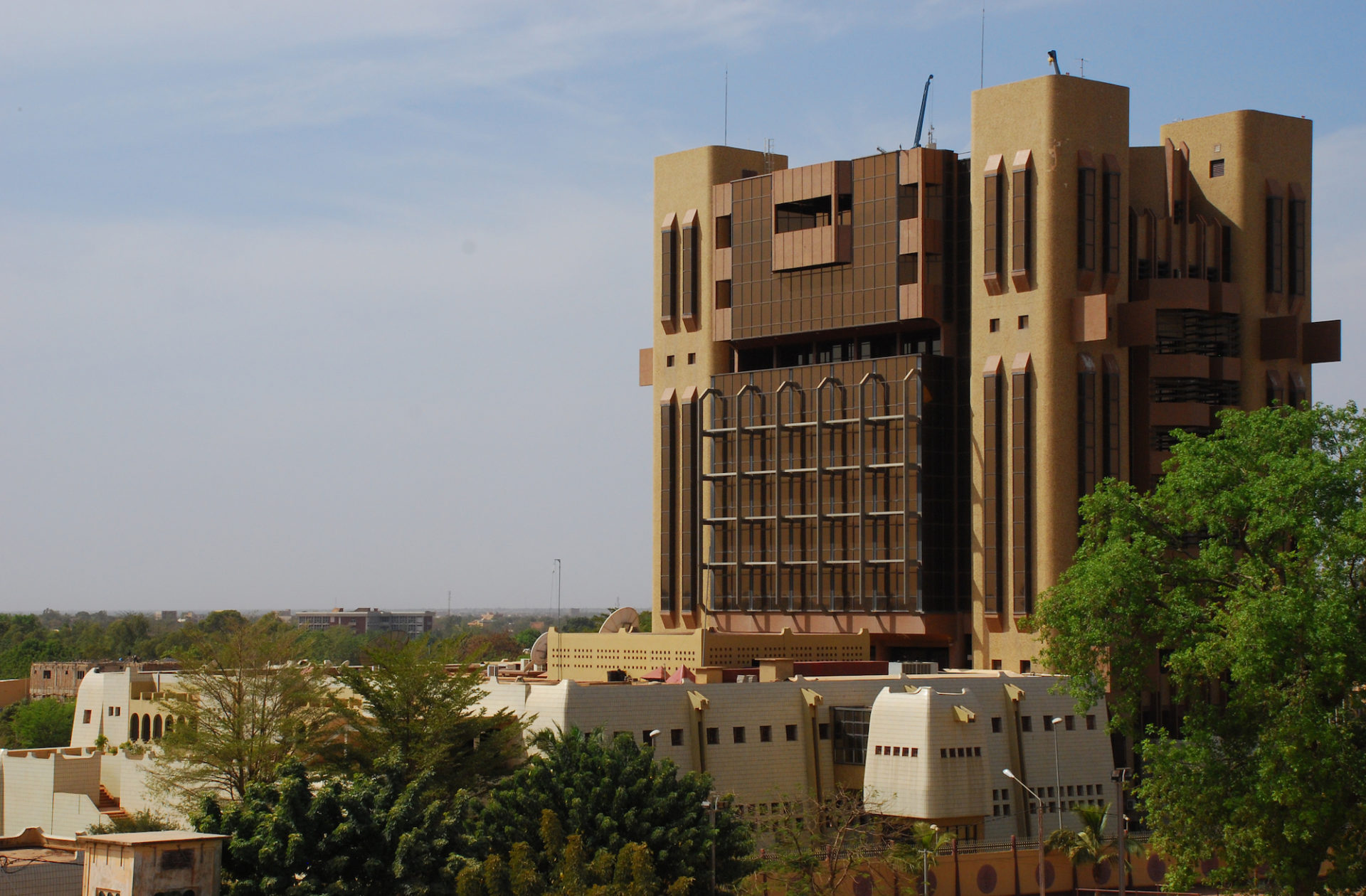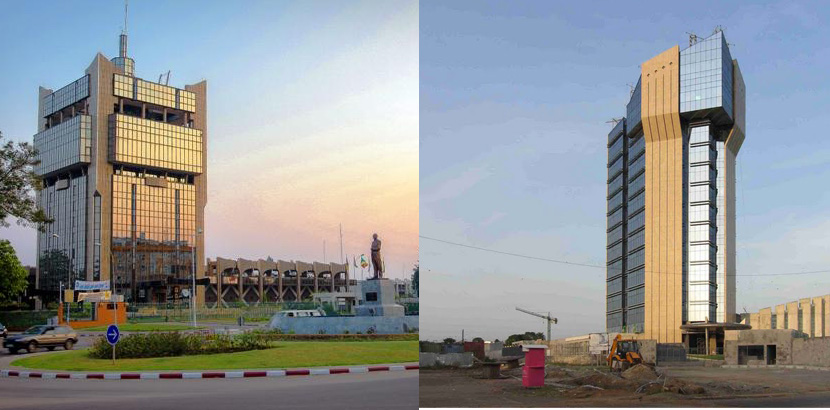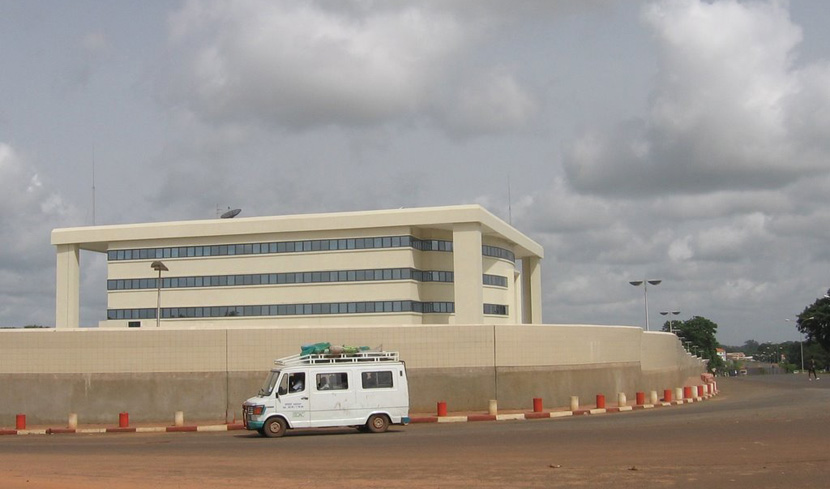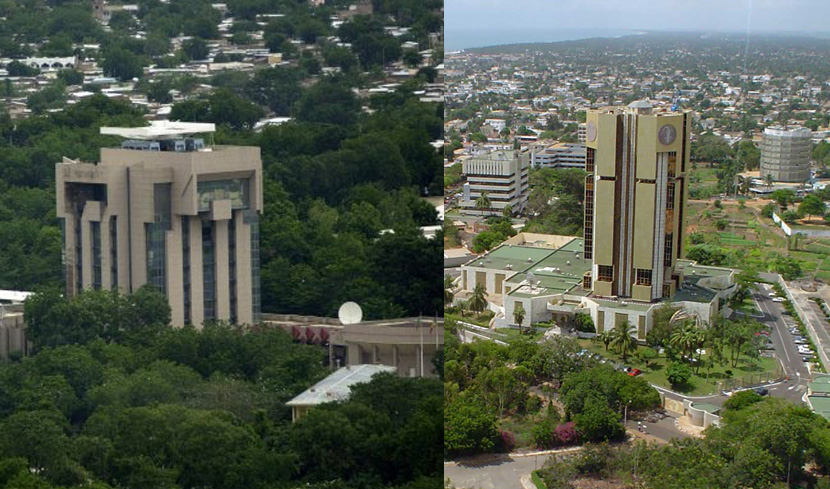The skyline of almost every West- or Central African capital is dominated by a single tower, housing the local offices of the regional central banks BCEAO and BEAC. These institutions have been created at the onset of the decolonisation wave in the early 60s and have been powerful economic and financial stakeholders in the region ever since. Since their establishment the BCEAO and the BEAC have carried out an ambitious building program, realising impressive office buildings and towers in the capital of every member country. Over the last few decades, this has resulted in a striking pattern of regional architecture, counting for the majority of this part of the continent’s highrises.
Currently, a total of eight West-African countries are grouped in the BCEAO (Banque Centrale des États de l’Afrique de l’Ouest) and six Central African in the BEAC (Banque des États de l’Afrique Centrale). These regional banks were set up to monitor the emission of the already existing ‘Franc CFA’, the shared currency named after the ‘Colonies Françaises d’Afrique’ – an abbreviation quickly changed to ‘Communauté Financière Africaine’ after independence. Since then, the BCEAO and BEAC have managed the financial legislation of their member states to a large extent. France, the former colonizer of most of the participating countries, in practice hardly relinquished control and still has a remarkable influence on the institutions’ policies today.
An event that clearly shows the power of France over the BCEAO and BEAC was Paris’ unilateral decision in January 1994 to suddenly devaluate the France CFA by half. Arguing that a cheaper CFA would improve African exports, in reality it made imported goods from Europe, as well as debt repayment obligations, twice as expensive. Although the BCEAO and BEAC have also managed to avoid most of the financial volatility occurring in other African countries, both regional banks are often perceived by the population as being complicit in carrying out these policies. As a result, their inescapable towers in the urban landscapes of African capitals will for many continue to represent the neo-colonial relation with France, locally known as the ‘Francafrique’.
Although the institutions’ policies are characterized by foreign influences, some of the BCEAO and BEAC towers’ architecture is characterized by various references to vernacular building styles. In particular the BCEAO towers in Bamako (Mali) and Ouagadougou (Burkina Faso) clearly echo the well known mud architecture of Djenné and Timbuktu. Others are less extravagant and some are just glass monstrosities, such as BEAC’s constructions in Libreville (Gabon) and Brazzaville (Congo). The main office in Bissau, capital of the newest BCEAO member country Guinea-Bissau is clearly the least inspired, although this has mostly to do with the complexities related to sourcing building materials in the poorest of West-African nations.
Most BCEAO and BEAC offices are the only high-rises in town and are therefore defining the skyline of their respective cities. In particular the ‘tour BCEAO’ in Bamako is dramatically situated next to the Niger river, but also the Niamey (Niger), N’djamena (Tchad) and Lomé (Togo) headquarters are towering over the otherwise low-rise African urban landscapes. Dakar (Senegal) and Abidjan (Ivory Coast), both regional economic powerhouses, already have multiple high-rises, making the banking buildings not as striking as elsewhere. A shared characteristic of all BCEAO and BEAC towers is their embedding in the urban fabric, as none of them are directly located on the street. All are surrounded by a large garden or open (parking) space, closed off to the public by a high, well-protected wall. While the varied spaces of the rest of the city center – full of covered shops, markets, eating stalls and public buildings – provide some shelter to the harsh climate, the architectural set-up of the regional banks create large, hostile ‘urban islands’ in the middle of African capitals.
As a consequence, the BCEAO and BEAC towers can be interpreted in various, opposing ways. They can be seen as the isolated palaces that take up large swaths of urban space in city centers, housing the complicit officials implementing policies from the Global North. On the other hand, the advent of the highrise in the African capital could also be perceived as a sign of progress and development, as the ‘highest’ construction is typically viewed in a similar way around the world. One thing is for sure, the building of the BCEAO and BEAC towers have provided a remarkable opportunity to experiment with ‘African’ architecture on a different scale than usual in the continent. Economic progress, although not benefiting the majority of the population, might soon lead to the construction of some company for those lonely towers in African capitals.
